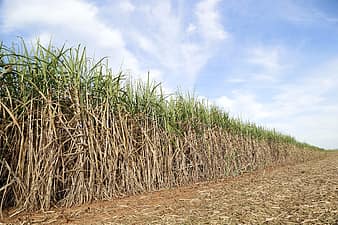Author: Karen L. Mascarenhas
 1. Carbon Capture and Storage (CCS) context
1. Carbon Capture and Storage (CCS) context
Energy is one of the primary means that supports modern life, either to enable industrialization of goods, the provision of services or even to meet the daily needs of the citizens, such as transportation, housing, work, food and entertainment. Alongside the demand for energy efficiency, changes in the composition of the local and the global energy matrix are increasingly advancing towards cleaner and renewable energy sources, motivated mainly by the planet sustainability and climate change containment.
These concerns are supported by two broad international pacts settled in 2015: the Paris Agreement and the launch of the Sustainable Development Goals by the United Nations.
In Brazil, the transition of the energy matrix requires, initially, a gradual reduction in the use of fossil fuels with a high carbon dioxide (CO2) footprint, switching to the use of natural gas and, later, biogas, solar, wind and hydrogen as sustainable sources of energy production. While the energy demand is greater than the capacity to supply it through renewable sources, natural gas, as one of the fossil fuels with the lowest emission of greenhouse gases, is seen as an alternative to support this transition, offering the potential to provide cleaner and more affordable energy for a large number of people in the country.
The geological formation of the pre-salt basin on the coast of five Brazilian states enables the extraction of large quantities of oil and natural gas, the latter with a high concentration of CO2. The pre-salt has specific characteristics that allow the creation of saline cavities capable of storing large amounts of CO2, avoiding ventilation into the atmosphere. Technologies are being developed to separate methane (CH4), CO2 and other gases in caves using a gravimetric method and other innovative technologies, keeping the captured CO2 without the need to re-inject it, and preventing its release into the atmosphere. These technologies are called Carbon Capture and Storage (CCS), or Carbon Capture Usage and Storage (CCUS) when it also involves the use of carbon for other ends.
Similar technologies adopted in a renewable area, such as the capture of CO2 released by the fermentation process in the ethanol production, are creating conditions for the capture, use and storage of carbon bioenergy (BECCUS). This technology can evolve to a negative CO2 footprint process, since the emissions from the processing, distribution and, finally, combustion of ethanol are neutralized through their absorption by the sugarcane plantation. In other words, the cycle becomes sustainable as the plants in the photosynthesis process absorb the gases released by the ethanol production process, and any reminiscent CO2 can be stored in underground reservoirs or employed as raw material for the production of other high-added-value products.
2. Social challenges in CCS implementation
However, the implementation of projects based on CCS technologies cause changes in the territory, as they imply in the creation or use of underground reservoirs on land (onshore) or underwater in the ocean (offshore), impacting the environment, their living ecosystems and the local community. Besides, CCS, CCUS, and BECCUS are not yet known by other agents outside the specific academic and industry segments that study or manage these technologies. Previous experiences of implementing projects of this nature have demonstrated the relevance of considering the perception and acceptance of government, media, society, other academics and industries not directly related to such technologies. Their reactions can emerge from irrational bias, through strong opinions, even if they have no information about the risks or benefits involved.
Therefore, public perception can be one of the critical barriers to the deployment of CCS projects. Local communities’ opposition has shown to derail demonstration plants in some of the first projects that aimed to store CO2 onshore as the Barendrecht Project in the Netherlands, and Beeskow in Germany
3. Public perception of CCS technologies in Brazil
In Brazil, studies on public perception related to CCS are still scarce, as only three were identified. The most comprehensive concerns a CCS onshore field study at the Recôncavo Basin in the state of Bahia, an outstanding region of oil exploration. The qualitative research was conducted with ten communities located in prospective areas for CCS implementation who did not have any knowledge of the concept. The main outcomes show that people that have a previous relationship with oil companies are best equipped to identify benefits or disadvantages, that trust in government and private companies can enhance their support of such projects, and that further investigation is imperative as Brazil is a vast country with great cultural diversity, making it hard to define a national perception of CCS as each region has its singular peculiarities and views.
Public perception studies within developing countries are challenging as the low level of fundamental education impacts on the citizens’ capacity to understand complex concepts like climate change. This tends to be the profile of inhabitants in Brazilian regions where CCS projects could be implemented.
Pioneering studies in public perception in Brazil are under development in the Research Centre for Gas Innovation (RCGI), headquartered at the Polytechnic School of the University of São Paulo, financed by the Research Funding Agency of the State of São Paulo (FAPESP), in partnership with the private company Shell.
The RCGI started its activities in January 2016 and currently has 46 projects focused on innovation, aiming at the sustainable use of natural gas, biogas, hydrogen and the reduction of CO2 emissions worldwide to contribute towards climate improvement and sustainability.
The initiative to research public perception emerged from the intention of complementing the technical and legal research carried out in the RCGI with the social and human dimensions, in a multidisciplinary approach. This process aims to understand the public perception of all agents, as government representatives, media, academia, industry, NGOs and society, building trustful relationships and supporting the analysis of potential CCS projects in the country.
Author: Karen L. Mascarenhas – Imperial College London, University of São Paulo, Research Centre for Gas Innovation (RCGI)
 Author: Rumbi Nhunduru
Author: Rumbi Nhunduru
